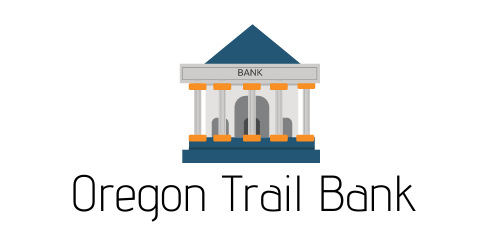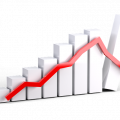The Role of Heat Maps in Boosting B2C E-commerce Conversion Rates: Comparing Organic vs. Paid Traffic Interactions

Heat maps revolutionize how online retailers understand customer behavior by providing visual representations of user interactions across web pages. These powerful analytical tools reveal where visitors click, how far they scroll, and what elements capture their attention—insights that can dramatically improve conversion rates when properly interpreted and applied.
Understanding heat map technology for e-commerce success
Heat map technology transforms complex user interaction data into intuitive visual representations, making it easier for e-commerce teams to identify opportunities and obstacles in the customer journey. With average e-commerce conversion rates hovering around 2.5-3%, while industry leaders achieve 5% or higher, heat maps provide the actionable intelligence needed to close this performance gap. Visual analysis allows retailers to make data-driven decisions about page layouts, product placements, and call-to-action positioning.
Key Types of Heat Maps for B2C Retail Analysis
B2C e-commerce stores benefit from several specialized heat map varieties, each offering unique insights into customer behavior. Click heat maps reveal exactly where users are interacting, highlighting which buttons, links, and elements receive attention and which go ignored. Scroll heat maps show how far down pages visitors typically venture, helping identify if critical content remains unseen. Movement heat maps track cursor positions to indicate areas of interest. The most sophisticated option, eye-tracking heat maps, records actual visual attention patterns, showing precisely what captures consumer focus on product pages. For comprehensive analysis of customer behavior across different traffic sources, you can access puntolog.com for more specialized heat mapping resources tailored to conversion optimization needs.
Interpreting heat map data: beyond basic metrics
Extracting maximum value from heat map data requires looking beyond surface-level patterns to uncover meaningful trends that drive strategy. Effective interpretation involves comparing interaction patterns between traffic segments—particularly organic versus paid visitors, who often exhibit different behaviors based on their entry intent and familiarity with your brand. Visual cues from heat maps should be analyzed alongside quantitative metrics like bounce rates, which average 3.3% across industries, and platform-specific performance data showing disparities between desktop (2.8% conversion) and mobile devices (which also average 2.8% but face unique challenges). Focused analysis might reveal that paid traffic engages more with promotional content while organic visitors gravitate toward detailed product information, allowing for targeted optimization of each journey path.
Organic vs. paid traffic behavior patterns
 Understanding visitor behavior patterns through heat maps provides e-commerce businesses with valuable insights for conversion rate optimization. Heat maps visually represent user interactions, helping identify how different traffic sources engage with your site. With average e-commerce conversion rates hovering around 2.5-3%, leveraging heat map analysis for both organic and paid traffic can help push your metrics toward the industry leaders' 5% or higher rates.
Understanding visitor behavior patterns through heat maps provides e-commerce businesses with valuable insights for conversion rate optimization. Heat maps visually represent user interactions, helping identify how different traffic sources engage with your site. With average e-commerce conversion rates hovering around 2.5-3%, leveraging heat map analysis for both organic and paid traffic can help push your metrics toward the industry leaders' 5% or higher rates.
Distinct interaction patterns from search engine visitors
Organic search visitors exhibit unique behavior patterns that can be precisely captured through visual heat maps. These users typically drive around 53% of web traffic and show distinct engagement characteristics. Heat map analysis reveals that organic visitors often explore more pages per session, with deeper scroll depths indicating higher interest in content. Eye-tracking heat maps show these visitors scan product descriptions more thoroughly, with 50% valuing detailed content over price points. When analyzing click patterns, organic traffic tends to interact more with navigation elements and category filters, suggesting they're in research mode rather than ready-to-purchase. Implementing structured A/B testing based on these heat map insights can lead to a 49% increase in conversion rates. Focusing on content quality is especially important since content marketing generates three times more leads at 62% less cost compared to traditional methods.
Paid campaign traffic engagement characteristics
Paid traffic exhibits significantly different behavioral patterns compared to organic visitors. Heat maps reveal paid traffic tends to focus more intensely on specific page elements mentioned in ads. Click heat maps show these users make more direct paths to call-to-action buttons, with less exploratory behavior. Scroll depth analysis indicates paid traffic typically explores less page content, making above-the-fold optimization crucial. Different paid channels also show varying engagement patterns – Google Ads traffic converts at an average 4.8% rate while Facebook achieves 9.21% across industries. Visual behavior analysis shows that personalizing landing pages based on the specific paid channel can boost e-commerce revenues by 10-30%. Mobile engagement differs markedly too – 61% of users won't return to a problematic mobile site and 40% will visit competitors instead. For maximum effectiveness, heat map analysis should inform ongoing optimization of checkout processes, as 70% of users abandon carts due to complicated checkouts. Using heat map insights to create a seamless path from ad to purchase is essential for maximizing return on ad spend.










Recent Comments